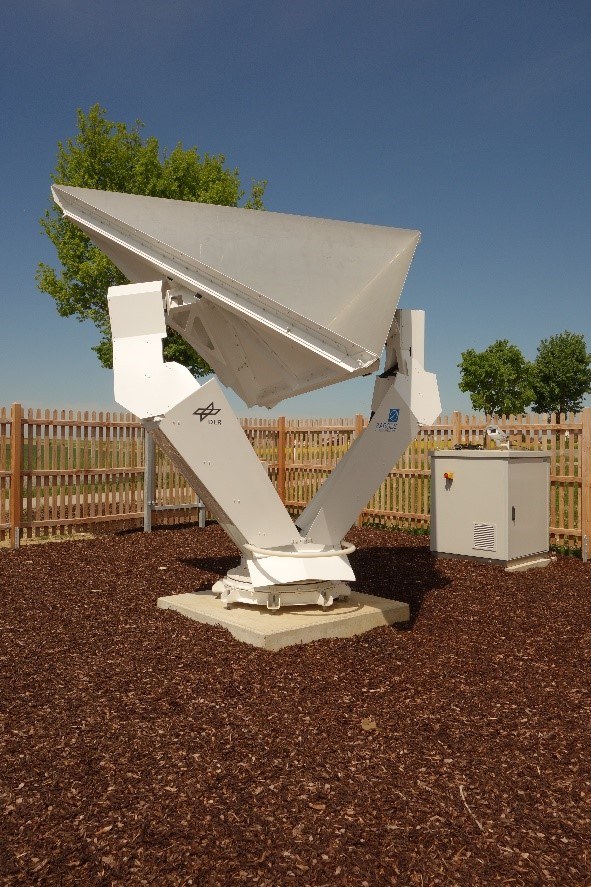On Innovative Reference Targets and Analysis-Ready Radar Data

How to define and ensure the data quality of state-of-the-art spaceborne radar satellites? How can synergies between various current and future radar missions be leveraged? How to ensure comparability between radar data acquired by missions operated by different national and international space agencies? And how can complex data sets acquired by different radar satellites be processed in such a way that they can be used by non-radar experts?
To discuss these and many other questions from the field of calibration of satellite radar missions, an international community of radar experts met at the Microwaves and Radar Institute of the German Aerospace Center (DLR) in Oberpfaffenhofen for the annual meeting of the CEOS WGCV SAR Subgroup on Calibration and Validation of High Resolution Synthetic Aperture Radar (SAR) Sensors.

Committee on Earth Observation Satellites
The Committee on Earth Observation Satellites (CEOS) was founded in 1984 for coordinating and harmonizing Earth observation missions and facilitating data access as well as the use of these data by the user community.

The Working Group on Calibration and Validation of Synthetic Aperture Radar (CEOS WGCV SAR) was established in 1989 to promote high quality radar data from airborne and spaceborne systems through precision calibration in the areas of radiometry, phase and geometry, and to enable the validation of advanced products based on these data. The SAR subgroup serves as a forum for international technical exchange on recently developed methods, techniques and equipment in the field of SAR calibration and validation. It also establishes standards, definitions and calibration/validation requirements for synthetic aperture radar imaging systems and supports the harmonization of user products and formats to facilitate international cooperation programs in the field of SAR system calibration and validation.
To this end, the working group has organised annual conferences over the past 35 years, bringing together SAR calibration experts from virtually all major space agencies and industry partners, and more recently from new-space companies, to discuss the latest results, novel calibration concepts and techniques for current and future SAR missions. In recent decades, the complexity of SAR missions has steadily increased in order to meet the ever more stringent requirements of different missions while at the same time increasing the resolution of the acquired images. Future systems with digital beamforming techniques based on multi-channel architectures will require further improvements and the development of novel calibration methods and procedures.
2023 annual conference at the DLR SAR Calibration Center
For the third time after 1991 and 2008, the DLR SAR Calibration Center at DLR's Microwaves and Radar Institute hosted the annual conference of the CEOS SAR working group in Oberpfaffenhofen. The DLR SAR Calibration Center has been a world leader in the calibration of SAR systems for more than two decades by developing state-of-the-art calibration concepts and algorithms as well as innovative reference targets that are developed, deployed and maintained in support of a variety of national and international SAR satellite missions. Figure 3 shows an example of one of the remote-controlled corner reflectors on the DLR calibration field, which is currently used for supporting the Sentinel-1 mission of the European Space Agency (ESA).

Over 110 SAR experts met at DLR this year to discuss the latest results and developments in the field of calibration and validation of spaceborne SAR sensors and products. The main topics included the establishment of a network of SAR calibration sites (The CEOS SAR calibration network - SARCalNet) and the development of preprocessed data products (Analysis Ready Data, ARD). The latter is the approach already mentioned above of specifying data formats and processing methods in such a way that SAR data can be made accessible in a standardized and user-friendly way to promote and facilitate the scientific and commercial use of SAR images by non-radar experts. Last but not least, the DLR SAR Calibration Center presented its innovative dual-band (L/X-band) calibration transponder for the first time during a tour of the DLR campus. This instrument was only recently deployed and will now be characterized in detail over the coming months in order to support future spaceborne SAR missions as a reference target.
Authors of this article
Patrick Klenk and Jens Reimann (DLR SAR Calibration Center at DLR's Microwaves and Radar Institute).
Tags:
